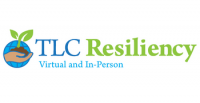Every time I type the word “resiliency,” spellcheck seems to prefer the word “resilience.” It made me question whether or not the word “resiliency” exists. When I searched the definition for “resiliency”, it redirected me to the definition of “resilience.” Is there a difference between the words? According to Oxford’s definition, “resilience is the capacity to recover quickly from difficulties; toughness.”
What then is resiliency? I am not a linguist, but I would submit that resiliency is the practice of being resilient. Resiliency is a philosophy that believes in embracing difficulties and seeing them as opportunities for growth. Resiliency does not submit to fear.
Resiliency is practiced by getting up every time you are knocked down. The practice of resiliency is clearly on display by the people of Ukraine, as they are being attacked by a supposedly more formidable opponent. They refuse to give up. When the United States offered President Volodymyr Zelenskyy an opportunity to escape via helicopter, he stated, “I need ammunition, not a ride.” Zelenskyy’s acts of resiliency are infectious and admired, as videos of Ukrainian citizens standing in front of Russian tanks or taking up arms to defend their country has gone viral.
By all reports, Putin has underestimated the resiliency of the Ukrainian people. Historically, Ukraine has struggled for independence. They have been occupied by several countries including Nazi Germany and Russia. Their people have faced repeated attempts of extermination. On January 21, 1990, over 300,000 Ukrainians organized a human chain for Ukrainian independence between Kyiv and Lviv. Ukraine’s dream of independence became a reality on August 24, 1991, with the fall of the Soviet Union. By practicing resiliency in the face of prior adversity, the Ukrainians are well prepared for what they are currently facing.
How do the lessons of the Ukrainians apply to practicing resiliency within a child’s development? I am reminded of Dr. Rabbi Abraham Twerski’s story of the resilient lobster. While Dr. Twerski was waiting at the dentist’s office, he read an article about how the lobster gets a new shell. As the lobster grows, it experiences pressure and discomfort, confined by its shell, Dr. Twerski tells us. “So it goes under a rock, casts off its shell, and produces a new one.”
“The stimulus for the lobster to be able to grow is to feel uncomfortable,” Dr. Twerski points out, adding that, “if lobsters were able to go to a doctor, they would be given a Valium or Percocet and never grow.”
Research supports Dr. Twerski’s lobster’s story of resilience. A recent study found that, contrary to the researcher’s expected findings, the more intimately exposed you were to Covid-19, the more resilient you were.
Resiliency is in our DNA. On average the male produces 100 million sperm to fertilize one egg. Of the 100 million sperm, only one survives and fertilizes the egg. Fertilization is an example of resiliency.
If resiliency is in our DNA, then why do we have so much difficulty coping with stress? Once the fetus is formed, it becomes dependent on the mother for its nutrition via the umbilical cord. After the child is born and the umbilical cord is detached, the opportunity for the practice of resiliency becomes real.
The child’s ability to practice resiliency is often thwarted by the best parental intentions. No parent likes to see their child suffer. The paternal impulse is to protect the child from the bully, the mean teacher, and the missing homework. However, when a parent shields a child from the natural consequences of his actions, he could be undermining his opportunity to experience some discomfort and shed his shell.
I am not suggesting placing a 6-month-old child in the middle of traffic. To cultivate resiliency it is necessary to take a developmental approach. A scaffold is a temporary support structure that is surrounded by the construction of a building. This metaphor has been used in early education but is applicable in raising a resilient child. As a child matures, he is faced with new obstacles. Depending on his level of development, he has the necessities to face certain stressors. The scaffolding provides the necessary support. The scaffold eventually goes away and the child should be able to stand on his own.
A parent’s role is to provide a child with the necessary skill set to face his difficulties and not escape them. President Zelenskyy did not want a helicopter to escape, he wanted the support necessary to face his enemy. That is the philosophy of resiliency.

